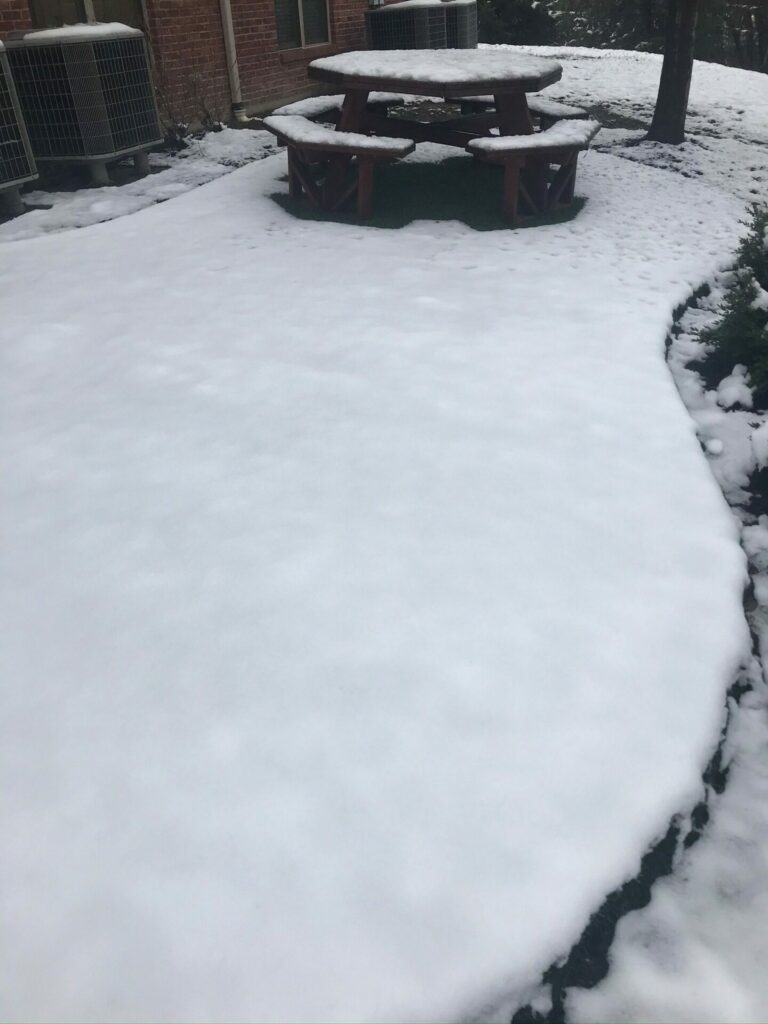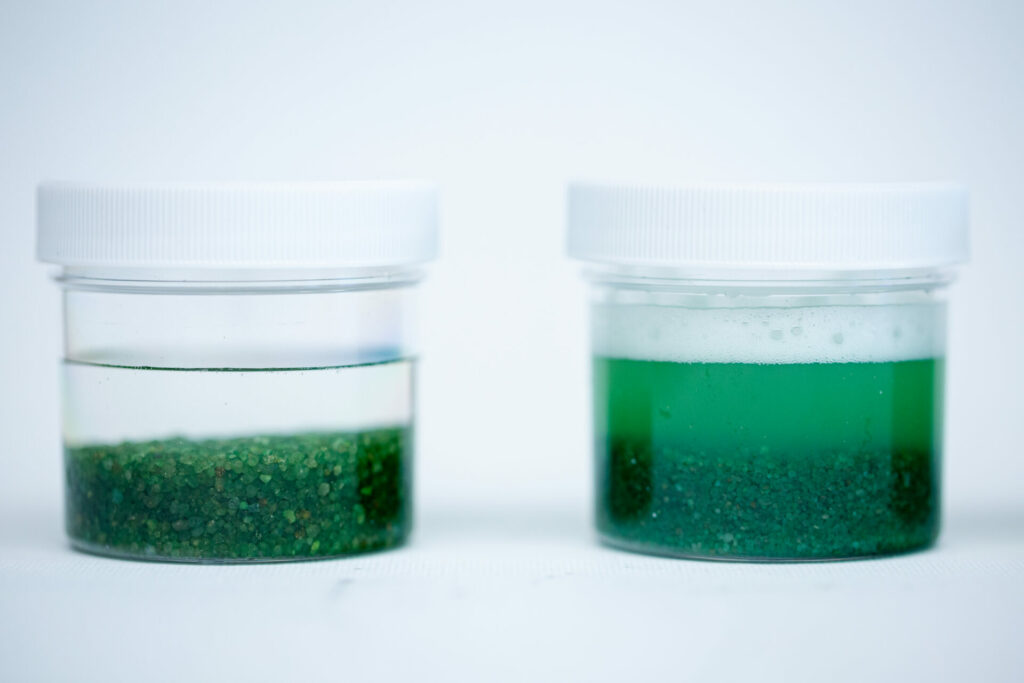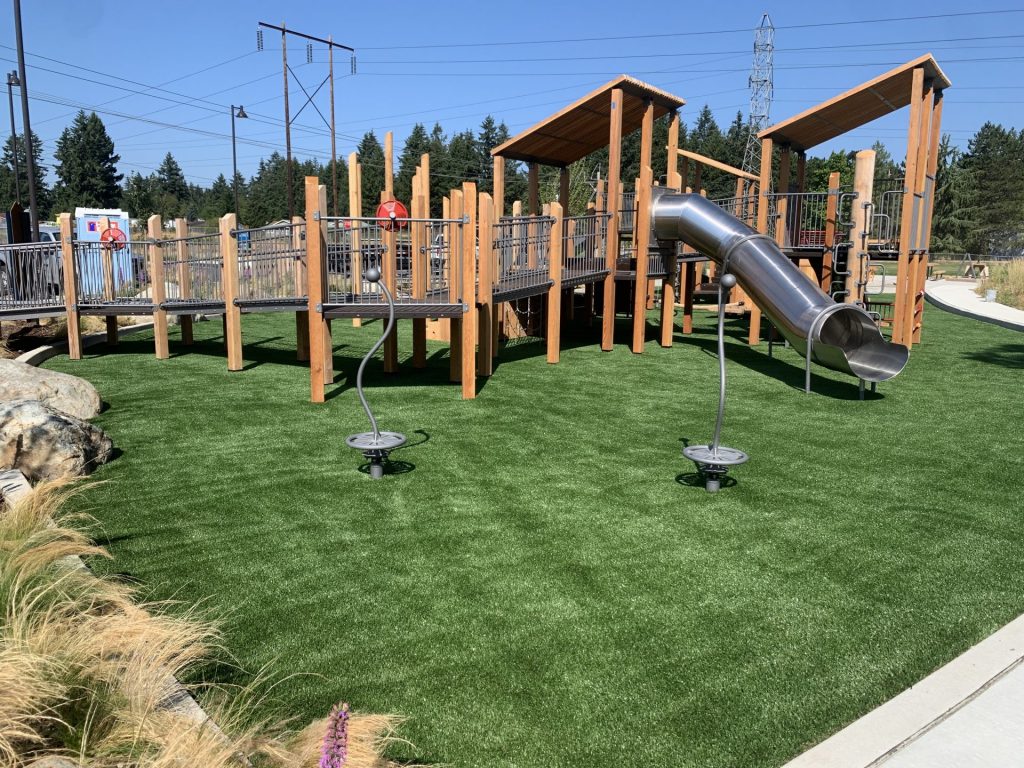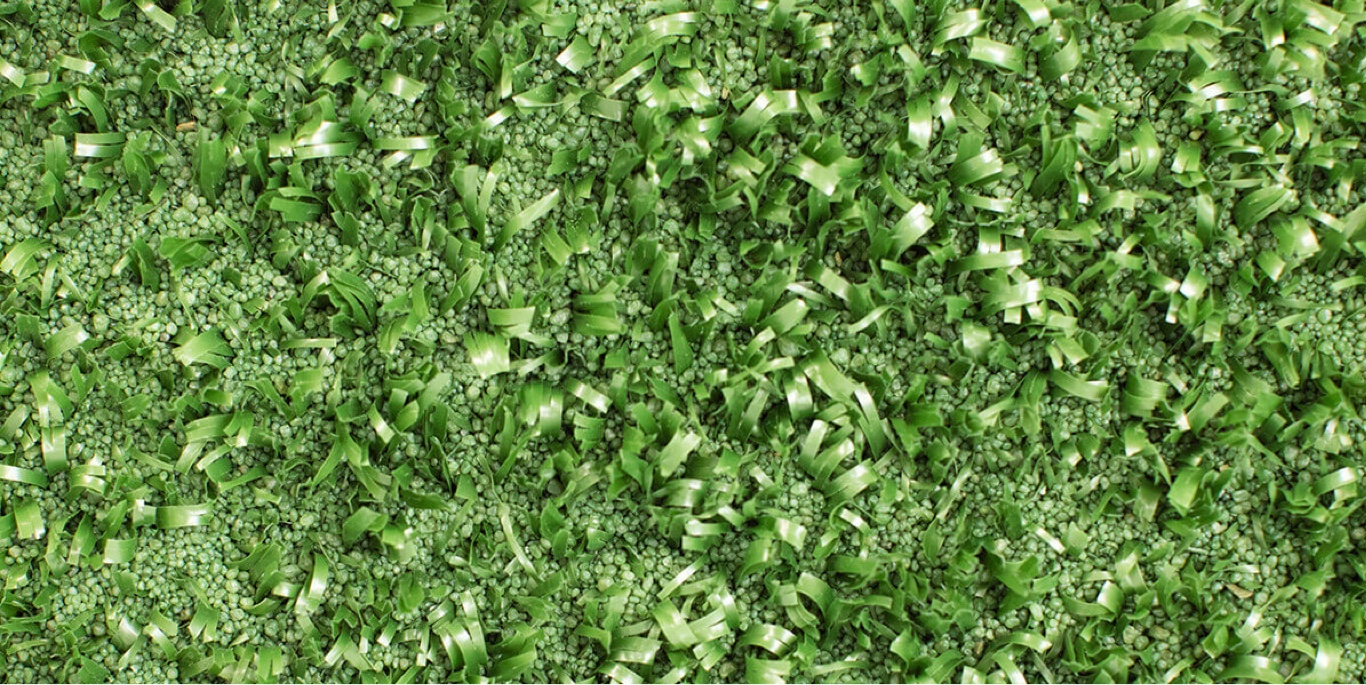
Infill Landscape Blog
Subscribe To Email Updates
Subscribe to our weekly newsletter and we’ll send updates straight to your inbox
Is Your Synthetic Turf Playground Safe? 9 Essential Steps for Designing a Protected Playtime Surface
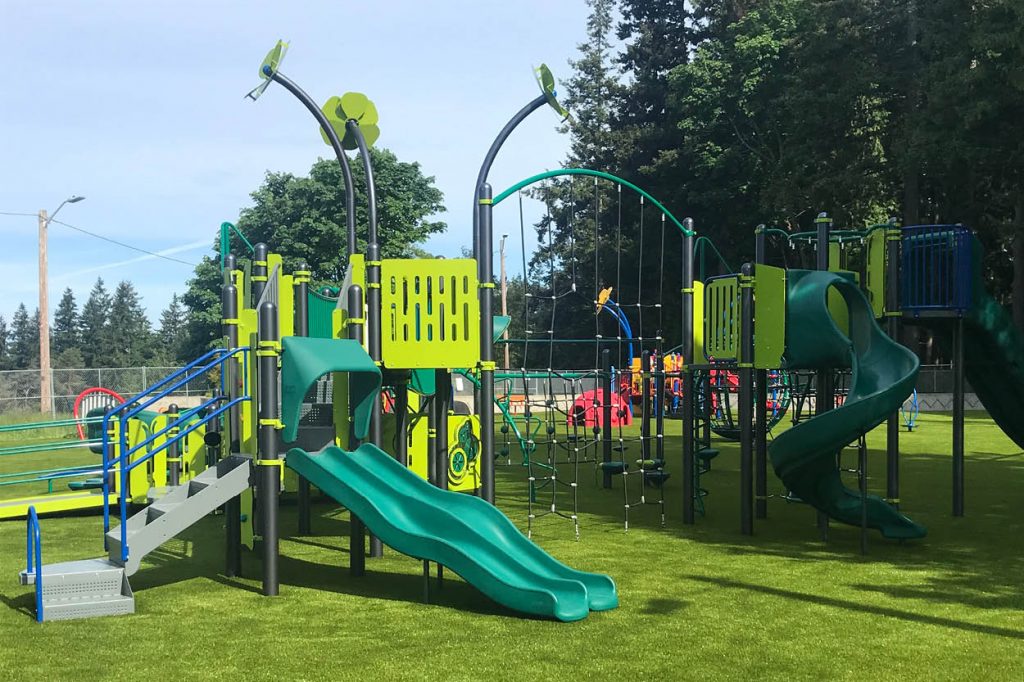
We all know kids need room to grow and explore, developing their sense of confidence along the way. A lot of that growth happens through playtime, in particular — which makes playgrounds an important vehicle not only for fun, but for self-discovery.
Whether you’re a parent or someone who has others’ little ones in your care, playground safety is of the utmost importance. You want kids to have the space to be adventurous, climb high (sometimes literally) and take risks — but in a way that’s protected and reduces their risk for harm.
If you’re installing a new playground system with turf or are simply looking to improve upon an existing playground, there are several things you’ll want to keep in mind in order to keep playtime a space for injury-free exploration. (Curious about the ways artificial grass turf for playgrounds can help boost safety? We’ll break down the reasons synthetic turf is an especially safe pick, too!)
Your playground safety inspection checklist
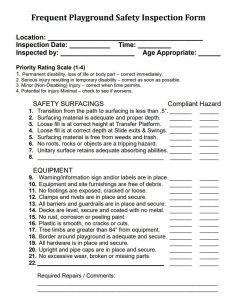
Safety should be top of mind not only when designing a playground, but also when maintaining one. Below are recommendations on key design elements to consider before installing a playground. You should also frequently complete a safety check on your surface and equipment once the playground is installed. Here is a guide by the National Recreation and Parks Association as well as a safety checklist you can use to complete frequent safety inspections and assess any needed repairs. It is also a best practice to work with a Certified Playground Safety Inspector(CPSI) during your playground design and installation. Learn more about what a CPSI does below.
1. Choose a reliable playground surface
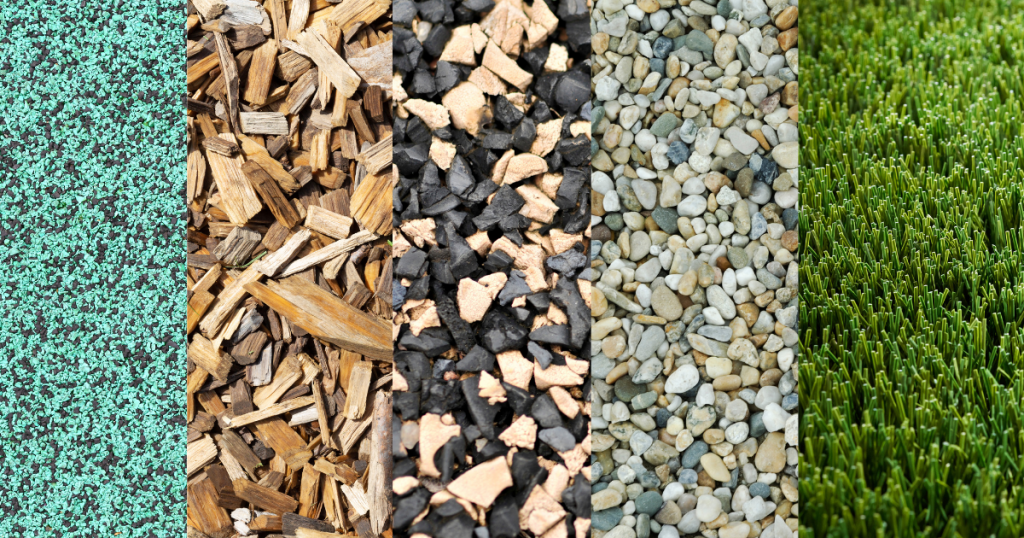
The surface of your playground can make a world of difference in whether kids are properly cushioned from critical fall heights. There are several surfacing options to choose from, including turf for playgrounds; you can read more about all of your options here.
Note that while loose-fill surfacing solutions, like wood chips, are inexpensive and easy enough to install, they also require a lot of maintenance in order to keep your play area consistently safe. That’s because loose-fill surfacing shifts around easily — and in highly trafficked areas, where loose-fill is especially likely to move around, critical fall height protection is not guaranteed because there is not enough product to cushion inevitable falls. Not only that, but trash and hidden, harmful debris can get mixed into loose-fill, too. In comparison, using artificial grass for your playground surfacing, putting in a shock pad, and pairing it with Envirofill or Safeshell artificial turf infill is reliably safe and low maintenance. Thanks to our products’ durability — and Envirofill’s 16-year warranty — that’s a lot of protection with limited surface upkeep.
If you don’t go with artificial turf or pour-in-place surfacing option, be sure to factor in maintenance fees and time for upkeep so that you can be certain your playground’s loose-fill is offering sufficient overall safety and protection from critical fall heights; you can read more about calculating for those heights here.
2. Determine which age group will be using the play area
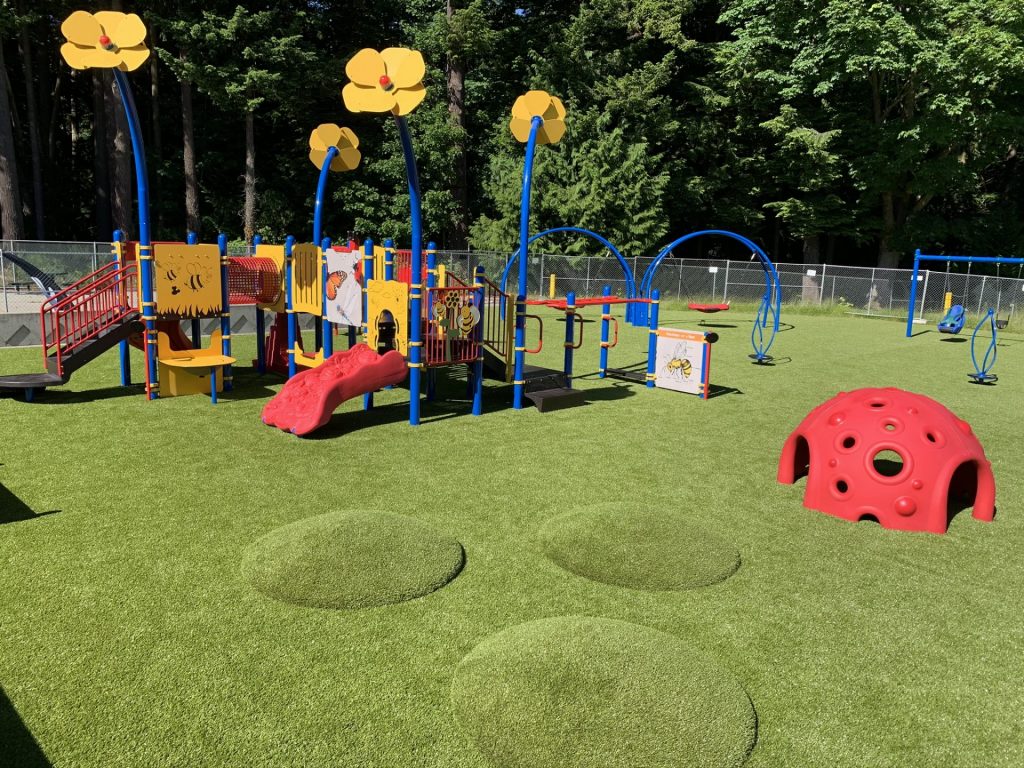
Different age groups will need differently sized equipment — meaning that the play area of a preschool is going to look pretty different from a public park’s playground, which is designed with kids of all ages in mind.
If your playground is going to be used by very small children only, it’s better to stick with smaller equipment and swing sets. If it’s a mixed-age playground or a home playground that your kids will use as they grow, you may want to pick swings that can be adjusted in height, for instance, or include different sizes of equipment.
3. Be exact when measuring the height of all equipment
Precision is key when protecting kids from the critical fall heights mentioned previously. You’ll need to measure from your playground’s highest point in order to determine what the critical fall height is and ensure your playground is adequately padded, the specifications for which will vary depending on the surfacing used. Equipment that’s over 30 inches high should also be spaced at least nine feet apart, and any elevated surface, including ramps and stairs, should be flanked by guardrails.
4. Ensure equipment is firmly anchored
Anchoring equipment in concrete is a great way to make sure it won’t move as kids climb around or as things shift over time due to weather. Keeping everything securely in place is, of course, crucial when putting objects like heavy poles and large equipment in the proximity of small kids.
If you’re using a loose-fill surface, you may also want to use this time to install a gravel base or lay down a landscape fabric. This will ensure your surfacing won’t be absorbed into the subsoil when it rains, further adding to equipment instability and a lack of control over fall protection.
5. Prevent the potential for head and limb entrapment
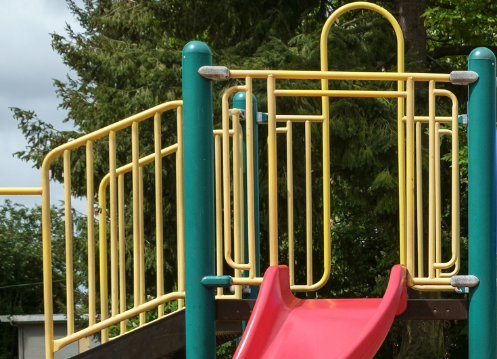
We all know that investigative kids like to stick their heads and arms through just about anything. Because of that, you’ll want to be positive there are no spaces they can squeeze into but may not be able to squeeze out of.
Any openings kids could potentially be trapped by, like the spaces between guardrails or ladder rungs, need to measure less than 3.5 inches or over 9 inches. The size of the holes in climbing nets matters; too; net perimeters that are 17 to 18 inches pose a risk for entrapment.
6. Remove tripping hazards
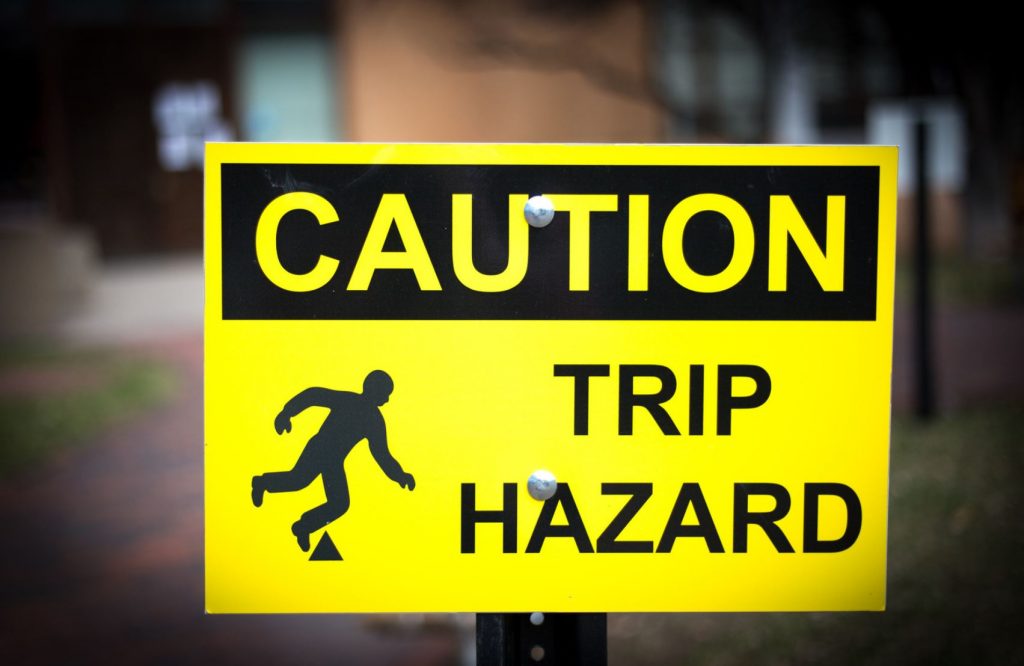
Anything that could cause small, running feet to trip and fall, like rocks, tree roots, exposed concrete footings or other debris, has no place on a playground. Some surfacing options — including pour-in-place surfacing, which can rumple and warp over time due to its susceptibility to heat — will require regular monitoring to ensure new tripping hazards haven’t been created. That’s a factor worth considering when choosing your playground surfacing.
Not only will a reliably flat artificial turf system quell worries over tripping hazards — it’ll also help ensure your playground is safe and welcoming for all children. Unlike most loose-fill options, an artificial turf playground can be designed as ADA accessible and inclusive, whether the kids on your playground are running or rolling.
7. Look for “pinch points” on equipment with moving parts
Any playground equipment involving parts that move against each other or move against a fixed point — think seesaws, for instance, or suspension bridges — should be checked for pinching hazards and small openings where a finger or hand could be crushed.
8. Watch out for toxicity in playground products
There are multiple ways toxins can make unwanted appearances on playgrounds, from the surfaces that kids run and roll on to the paint that coats equipment. That’s why, for folks putting in synthetic turf systems, choosing a proven non-toxic turf infill, like Envirofill or Safeshell, is a safe and secure bet. With small mouths and noses around, not to mention inevitable playground scrapes, that’s peace of mind that matters.
9. Get your playground design inspected by a pro
At the end of the day, no matter how diligent you’ve been when planning your playground system, certainty is what counts. Every member of our infills sales team has received their Certified Playground Safety Inspector Certification through the National Recreation and Park Association. It’s the industry-leading certification program in playground design safety, which gives us the expertise to help you confirm whether your plans for a new playground are optimized for the safest-possible fun.
Have an upcoming synthetic turf playground project? Talk through safety considerations with one of our Certified Playground Safety Inspectors.
Similar Blogs
